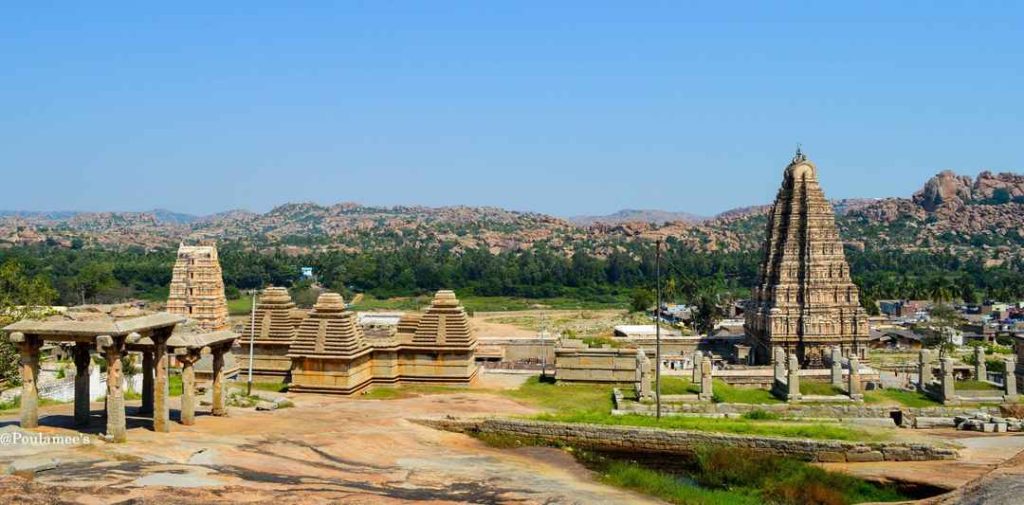Context:
Earlier this year the collapse of ‘Saalu Mantapa’, a pavilion at the Virupaksha temple in Hampi raised the question about the neglected World Heritage Site.
More on the news
- A variegated list of around 1,600 monuments, spread across an area of 250 square kilometres, makes Hampi one of the largest such sites in India to receive a UNESCO World Heritage tag since 1986.
- The spectacular city of Vijayanagara also known as Hampi — was the Vijayanagar empire’s capital.
- Hampi austere and grandiose site comprises mainly the remnants of the Capital City of the Vijayanagara Empire (14th-16th century CE), the last great Hindu Kingdom.

- The property encompasses an area located in the Tungabhadra river basin in Central Karnataka, Bellary District.
- The British antiquarian Colin Mackenzie, who went on to become the first surveyor-general of India, made the first map of Hampi in 1799. He also produced several watercolour paintings of the monuments in the city.
Excavation and Conservation efforts
- A concentrated effort to excavate and conserve Hampi began in the 1970s under the Hampi National Project.
- This project led to the discovery of many core structures of the Vijayanagara Empire, including the bustling marketplace near the Vitthala temple. However, much of Hampi’s surviving architecture consists only of granite bases, as the wooden structures were destroyed during the empire’s downfall.
- The Pushkarini, the five-tiered stepped tank in the royal centre, was, not discovered when George Michell (Architectural historian) first started documenting Hampi.
- The recent addition to the excavations is the paan-supari bazaar, a kilometre-long market in front of the Hazara Rama temple, a portion of which was first excavated in 1985.
Vijaynagar Empire
- The empire was founded 1336 AD by Harihara-I and Bukka-I of the Sangama dynasty, once spanned almost all of southern India.
- Hampi was a magnificent city, compared to Rome by travelers like Portuguese Domingo Paes.
- Hampi was largely forgotten after its ransacking in the 1565 Battle of Talikota until the British rediscovered it in the late 18th century.
A fight to keep the ruins alive
- Both the ASI and the State Department of Archaeology intensified their conservation efforts after the declaration of Hampi as a World Heritage Site by UNESCO in 1986.
- In 1999, Hampi was placed on UNESCO’s ‘World Heritage in Danger List’ after an attempt to construct a bridge across the Tungabhadra River.
- This led to the creation of the Hampi World Heritage Area Management Authority (HWHAMA) in 2007(set up under the HWHAMA Act 2002), which implemented a master plan dividing Hampi into core, buffer, and peripheral zones.
- The final powers for approving and regulating any developmental activities in the property rest with the HWHAMA.
- This regulation, however, led to conflicts with local communities, who found their livelihoods declared illegal under the new rules.
The Archaeological Survey of India (ASI) under the Ministry of Culture, is a government agency responsible for archaeological research, conservation of ancient monuments, and documentation of India’s cultural heritage.
UNESCO (United Nations Educational, Scientific and Cultural Organization) is a United Nations agency founded in 1945, headquartered in Paris. Its key functions include advancing education, fostering scientific research, preserving cultural heritage, and promoting freedom of expression.

